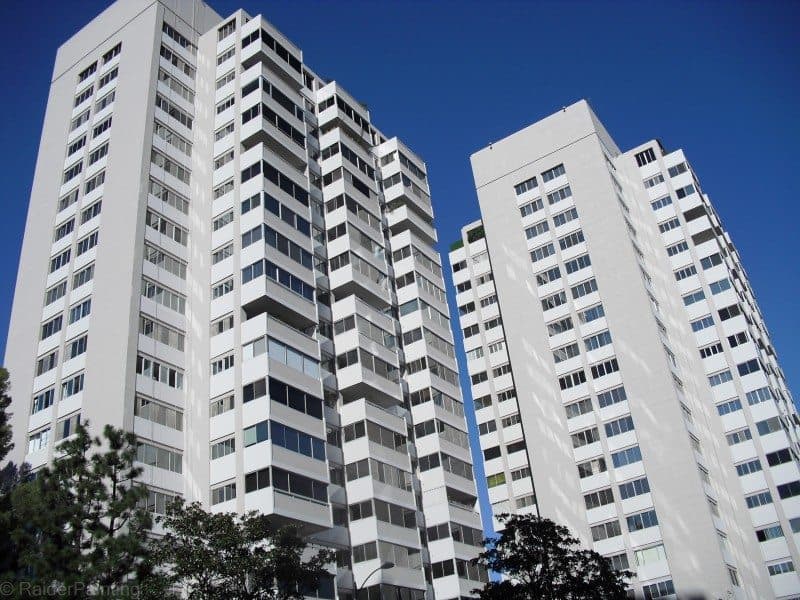What is Industrial Painting?
Simultaneously one of the most overlooked and vitally important aspects of running an effective commercial enterprise, industrial painting can be an enormous asset in business. There are a number of different approaches to it, as well as several types of paint and coatings that can be applied to meet a variety of needs. That being said, understanding exactly what it is and why you should make sure to contact a commercial painter for application can save a company untold amounts of money. First, it’s important to explore exactly what this technique is.
Types of Industrial Painting
The actual practice of using paints and coatings to protect commercial assets is ancient, extending back to the application of resins to boat bottoms to improve waterproofing and provide a level of protection from corrosion, but in modern times it can be used for a number of different tasks.
Corrosion protectants are very common among industrial coatings even today, as are coatings that can be used to stop leaks or repair parts of industrial materials. Intumescent fireproofing can be done with certain paints designed to act as a fire protection coating on important parts of a plant, and certain colors and types of paint can be applied to reduce the absorption of heat from buildings, lowering cooling costs.
However, there is more to each of these than might otherwise be understood from a simple explanation.
Industrial Painting to Prevent Corrosion
Both corrosion and erosion are present dangers to many industrial plants. In most cases, a type of highly corrosive chemical is necessary for part of the manufacturing process, but even if only water is being moved on a regular basis, it can have an adverse effect on equipment, wearing it down sometimes within months. In fact, just being outdoors and exposed to the elements can wear away various pieces of equipment and important structures. Fortunately, there are solutions available.
California painting contractors can take a look at your equipment and help you find the right kind of protectant to use for your industrial needs, but the basic premise remains the same in most cases.
Corrosion is caused by chemical reactions between materials that use part of the material itself to fuel the reaction. As the atoms in the corrosive element interact with the metal or plastic (in most cases) that it has come into contact with, that metal or plastic is slowly transformed into another state of matter or becomes a different molecule, usually a more brittle one due to a number of chemical changes that might be occurring.
High quality industrial coatings and paints are chemically designed to not react very much by having properties that are near to a state of chemical equilibrium. The structure of the molecules in these materials is also such that there isn’t a whole lot to “catch” for passing liquids and air that would otherwise erode the materials by flaking off microscopic pieces over long periods of time. As a result, you end up with equipment that lasts longer and stays in proper working order.
Fire Protection with Industrial Paint
The idea of using industrial painting to provide an intumescent fireproofing layer to parts of a facility is becoming more popular with every passing year. In this case, the fire protection coating is provided by a particular property of the matter that is used.
An “intumescent” is a material that reacts in a very specific way to heat exposure. When introduced to extreme heat, it both expands in volume and lowers in density. This is similar to the thermal expansion reaction in many ways.
There are two different types of intumescent: soft char and hard char. Both play an important role in fireproofing, with the first holding in hydration that is released and turned to steam when it expands in the presence of fire, helping to slow down the burn and leaving behind a material that is a poor heat conductor, and the other melting into sodium silicates and graphite that can produce fire walls. A qualified commercial painter can help determine what will be right for you.
Reducing Power Consumption
Industrial painting has been used quite effectively to reduce cooling costs all around the world, and California painting contractors especially have been quick to offer this solution to businesses that are looking for an easy way to see serious savings on their electricity bills without having to make their employees suffer.
In this case, the science regards the way that heat is transferred and held. In the same way that sand can be incredibly hot during the day but cool off very quickly when the sun isn’t directly beating on it, industrial plants can reduce the amount of heat that is absorbed by a building and therefore lower the general temperature inside.
This works by using paints that have been colored and chemically designed to not only not hold on to much heat, but to actively bounce it away from the structures. The reflective nature of these paints means that cooling costs will start to go down in a noticeable way with very little initial investment.
Talking to the Experts
Regardless of the type of business you have, there is likely a painting solution that will improve the way that you operate and ultimately save you money. That’s why it’s so important to speak to experts like the people at Raider Painting, who can take a look at your operation and find the means for industrial painting to enhance the way you do things.



